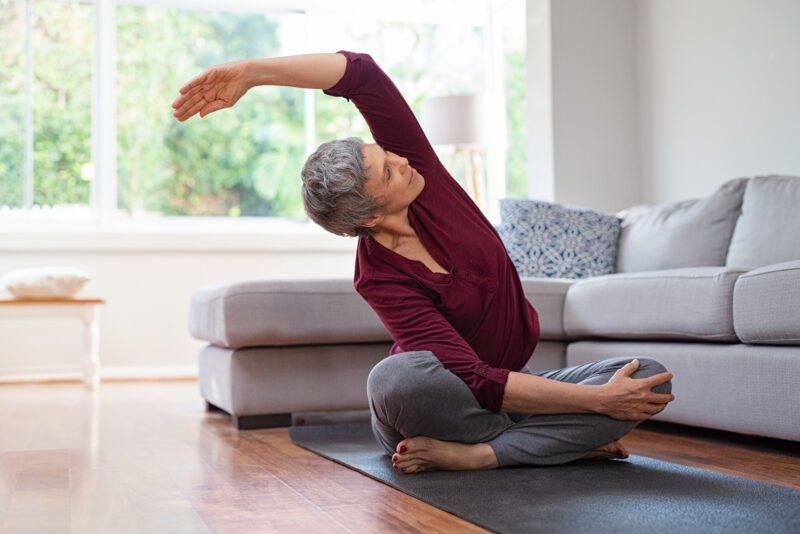Yoga seems out of reach to many older adults. Most think it’s only for athletic 20-somethings who can twist themselves into a pretzel.
This is far from the truth.
True yoga is in the mind; the body is just secondary.
In fact, the physical postures of yoga account for less than 15% of the entire practice of yoga. The true reach of one’s yoga practice extends beyond the physical aspect to include ethical standards, a sense of integrity, breath work, meditation and so much more.
Not to say yoga doesn’t have its physical benefits, of course; its beneficial impact is tremendous. But the positives extend far beyond just the body: Based on the available scientific research, a regular yoga practice serves as an effective intervention in improving health and vitality at not only the physical level, but the mental and social levels as well, offering an overall better quality of life to older adults.
Contrary to popular belief, yoga’s benefits are available to anyone, regardless of age or ability. One particular style of yoga, called Adaptive Yoga, offers the tremendous advantages of yoga regardless of physical limitations—which can be a perfect solution for many older adults.
True yoga comes from within
Developed by Matthew Sanford, renowned author, yoga teacher, and founder of the nonprofit organization Mind Body Solutions, Adaptive Yoga is a modern style of yoga designed for people with impaired mobility, whether the cause, including age, rheumatoid arthritis, multiple sclerosis, paralysis, stroke, amputation, etc.
Sanford, who was paralyzed in a childhood automobile accident, communicates this core message: The courage to transcend hardship and disability comes from within. And yoga’s ability to deepen the connection between mind and body helps one discover their innate courage.
He explains in his professional biography, “Deepening the mind‐body connection is more than a personal health strategy; it is the secret to living well, achieving success and finding purpose.”
How does Adaptive Yoga work?
Adaptive Yoga is designed specifically for any yoga student who has a limitation that would discourage them from attending a standard yoga class.
In Adaptive Yoga, the instructor adapts to the abilities of the student rather than the student trying to adapt to the instructions of the yoga teacher. Adaptive Yoga Instructor and Matthew Sanford-certified trainee Allen Baca explained, “We, as the instructor, adapt rather than the student adapting. Yoga is in them; it’s up to us as instructors to get creative to adapt our perspective and make yoga happen.”
Adaptive Yoga uses props like blankets, straps, yoga blocks and chairs to make the poses accessible to the individual.
A chair helps with balance and support. A yoga block brings the floor closer to the student, instead of the student straining to reach the floor. Straps aid in deepening a stretch, and blankets and bolsters can ensure proper spine alignment in floor poses.
An Adaptive Yoga instructor is taught to use props to help the student find their own expression of the pose in their body. For example, in Adaptive Yoga, a seated forward fold might look like this:
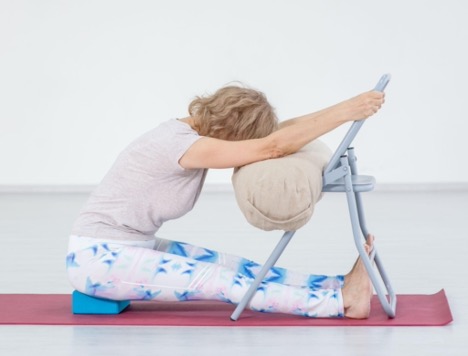
…instead of this:
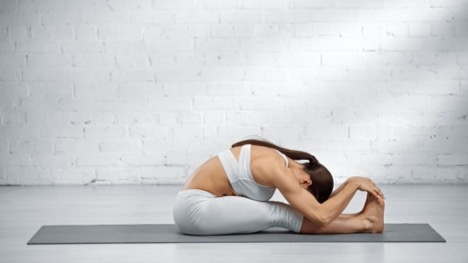
And a Crescent Lunge pose might look like this:
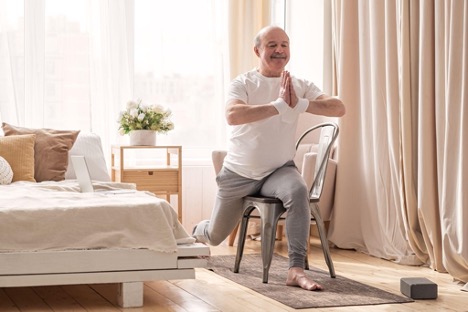
…instead of this:
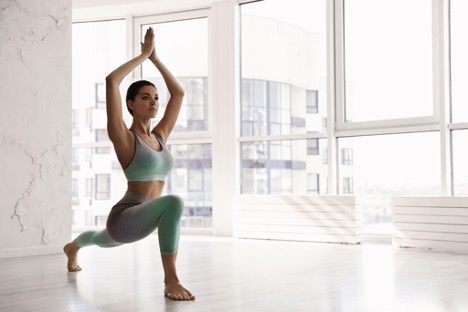
The key concept of Adaptive Yoga is that regardless of adaptation or variation, the student is still reaping the most important benefit of the pose: mind-body connection.
Principles of Adaptive Yoga
An Adaptive Yoga class emphasizes the following principles:
- The yoga instructor helps to facilitate a sense of presence and connection throughout each student’s body regardless of disabilities or neurological limitations.
- Each student feels included, safe and confident in their body and mind.
- Safety always comes first.
Most important, poses aren’t everything. “Yoga is not about what the pose looks like,” Baca said. “Yoga is about what the pose feels like.”
Benefits of Adaptive Yoga for seniors
Adaptive Yoga offers the same benefits to seniors as traditional yoga. It increases strength and improves flexibility. It’s particularly helpful for improving balance and proprioception (i.e., awareness of where the body is in space), thus reducing fall risk. It increases energy levels and improves sleep. Plus, it’s safe, which is so important for our loved ones, and it offers an enjoyable social experience for older adults, even when taught in an online format.
Adaptive Yoga is a place where seniors can discover their yoga without feeling a threat to their dignity. For Matthew Sanford, yoga was the key to enhancing connection to what he had lost in the accident. “It has helped me pay attention to the parts of my mind-body relationship that I normally wouldn’t have,” he said, likening it to someone who has lost sight getting a keener sense of taste, smell and touch.
Getting older is inevitable, but outgrowing yoga is not. Injury, chronic illness and age take so much from older adults, but yoga doesn’t have to be one of them.
